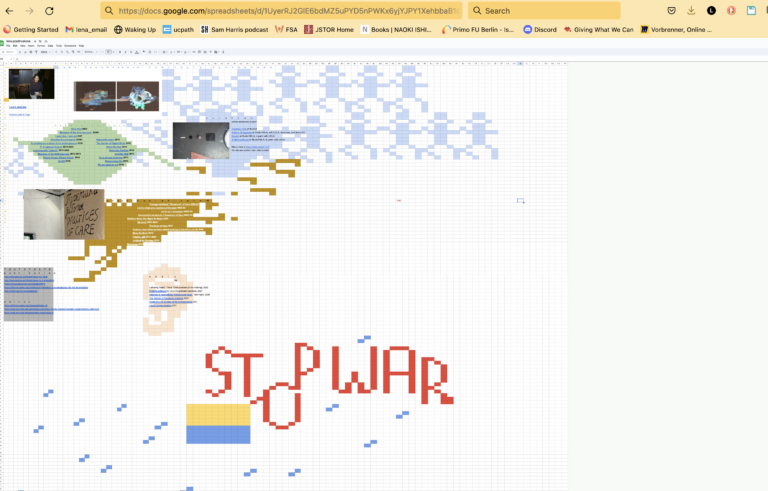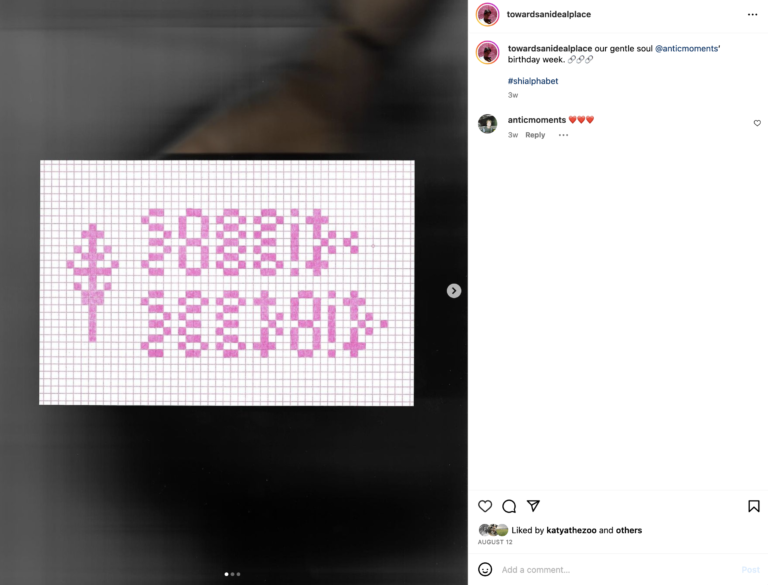Thematic Spreadsheet #3 (Oct #1): Routine / Social life

Since the middle of the last century, many efforts have been put into dissolving the distinction between artworks and documents. The liminal space that these practices unravel opens up a debate on productions, materials, and context surrounding such artistic inquiries. Experimentation on the subject, rooted in the 1960s and 1970s, foregrounded process-driven, conceptual works with their documentation and by-products as processual and projectual forms of art practice. Many such works are ephemeral in nature and are produced in an archival mode. Many such works are participatory and serial in format on one level or another. The aesthetic qualities of such works bear the load of the institutional and hierarchical character due to the media being often indistinguishable from processual documents. On the other hand, precisely due to the friction between the artistic practice and the utilitarian quality of the institutional sphere, such works strike attention as a challenging force to stretch the establishment of the art world. To this day, many art-focused structures maintain a specific separation between artworks and documents, and discussions surrounding document-based and document-driven artistic instances are complicated even further with the numerous artistic turns, including educational, archival, documentary, and ethnographical.
Spreadsheeting method attempts to revisit this debate through practical application of the work during the 2023 year of SoC and puts forth Speadsheeting as a form of care-driven instrument sent out with the Care (full) Spam emails to the SoC 2023 cohort.

Building on contemplations around document-based art, process-driven practice and maintenance work, spreadsheeting employs the tension between the institutional / commercialized and the process-driven / utilitarian space. With this, spreadsheeting methodology invites anyone to play with the unified “canvas” of the Google-embedded and widely accessible practical tools.
While constrained by the format, spreadsheeting art playfully brings up themes that There, there working group explores within their listening space. As a supplement to the sonic-based components of the by-weekly email sent out, each document embeds visual material and a set of links to the playlist that uncovers the by-weekly theme from various angles.

This methodology expands document-based artistic practice and affects the production, archiving, and dissemination of artistic works via a share button click.
Such methodology opens up such timely questions as follows: > What interesting questions arise between creation, routines, and documentation in knowledge production and contemporary art?
> How does a document-based format embedded within utilitarian and widely accessible platforms such as Google affect an artwork’s aesthetic and formal qualities?
> How can document-based works function as knowledge-dissemination devices, and how do their multifaceted utilitarian qualities affect authorship?
> How do web-based and practical-tool-driven platforms transform the perceptual space of the viewer/reader?
> What are the curatorial dimensions of document-based art presented on such platforms as Google-based spreadsheets, and what implications do such forms of practices that employ utilitarian documents have on the practices of artwork display?
In relation to the phenomenon of document-based art, spreadsheeting also invites the audience to playfully engage with the material formally presented as a “hack” of the habitual system, hence evoking a different kind of attention in studying the material presented as part of the spreadsheeting art format. The final point is that the format of spreadsheeting art naturally transforms into an archival device for There, there are contemplations on the subjects of care, maintenance, and awareness during times of crisis. Precedents of spreadsheeting-based work:
Initially, the project was inspired by the works of Bana Haffar (Canada and US-based Lebanese sound artist), Lena Pozdnyakova (Germany-based artist from Kazakhstan), and Aisha Jandosova (US-based artist with Qazaq and Kyrgyz roots). Each of their works incorporates Google spreadsheets as the primary platform for sharing their creative showcase, display of work, and research.

In the case of Bana Haffar, an electronic music composer working with the materiality of sound through ongoing independent research-creation in music sequencing and weaving technologies, a Google-based spreadsheet served as a platform for releasing her music. Since 2019, this format has been publicly available and is continuously evolving. Click here to see this work.
Since 2022, when the full-blown war and invasion of Ukraine was started by the Russian State, Lena Pozdnyakova, an artist who looks at the concept of an embodiment of daily life and blurring the boundary between life and art, has used Google spreadsheet to accommodate the space for not only for displaying of her works on subjects of ecology, intergenerational work, and sonic-based practices but also for writing statements of concern. Click here to see this work in an active mode.
Aisha Jandosova, whose practice is focused on the exploration of her connectedness to Qazaq and Kyrgyz ancestral roots through material practices of working with ornamentation, craft work, and maintenance, uses Google-based spreadsheets to explore the potential to transform letters from the dominant alphabets (Latin and Cyrillic) into the patterns with reflectional, rotational, translational symmetries, as well as patterns with intentional asymmetry. In 2023, she “drew #shiAlphabet (named after/loosely based on the elongated pixel patterns of cım-cıy reed screens).” Click here to learn more about this research.
Please view the materials shared as part of disseminating the spreadsheeting art, awareness, and knowledge (audio-based / playlist) here.


Lena Pozdnyakova
Lena (b. 1985, Almaty, Kazakhstan) is an artist and researcher.



